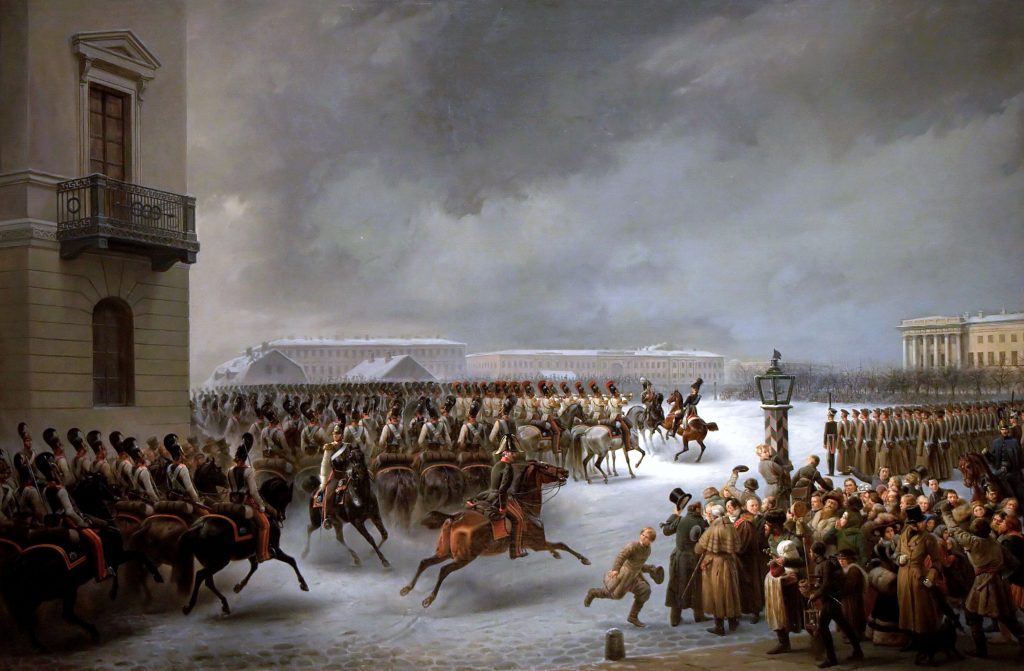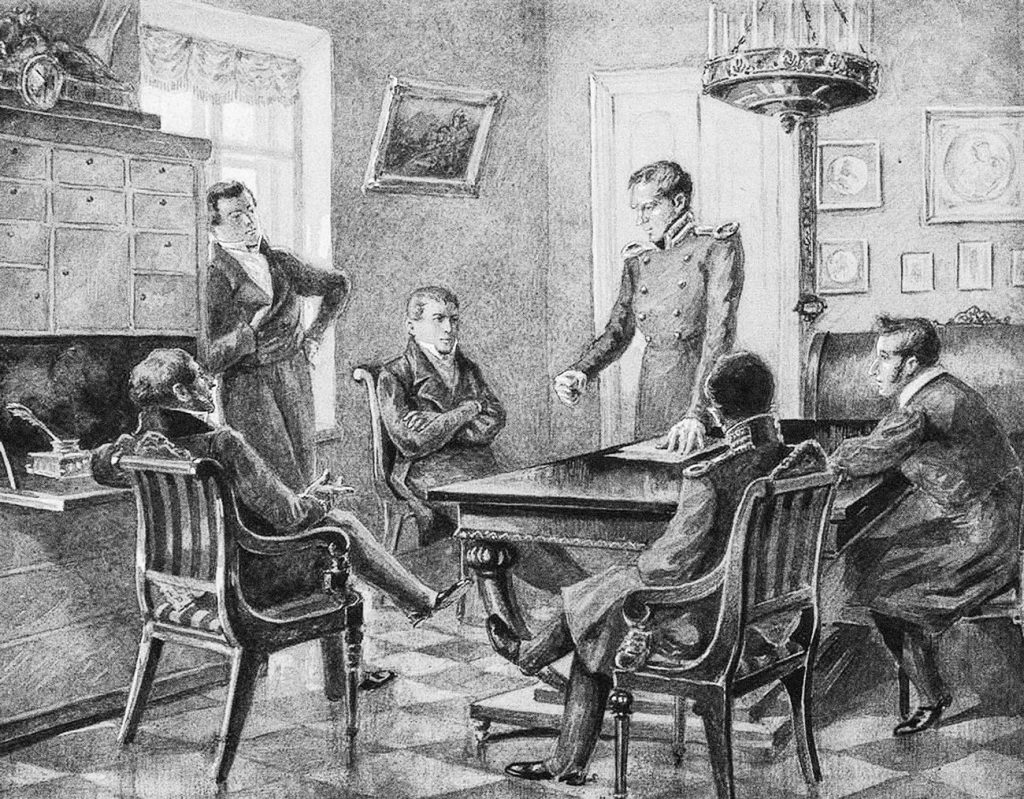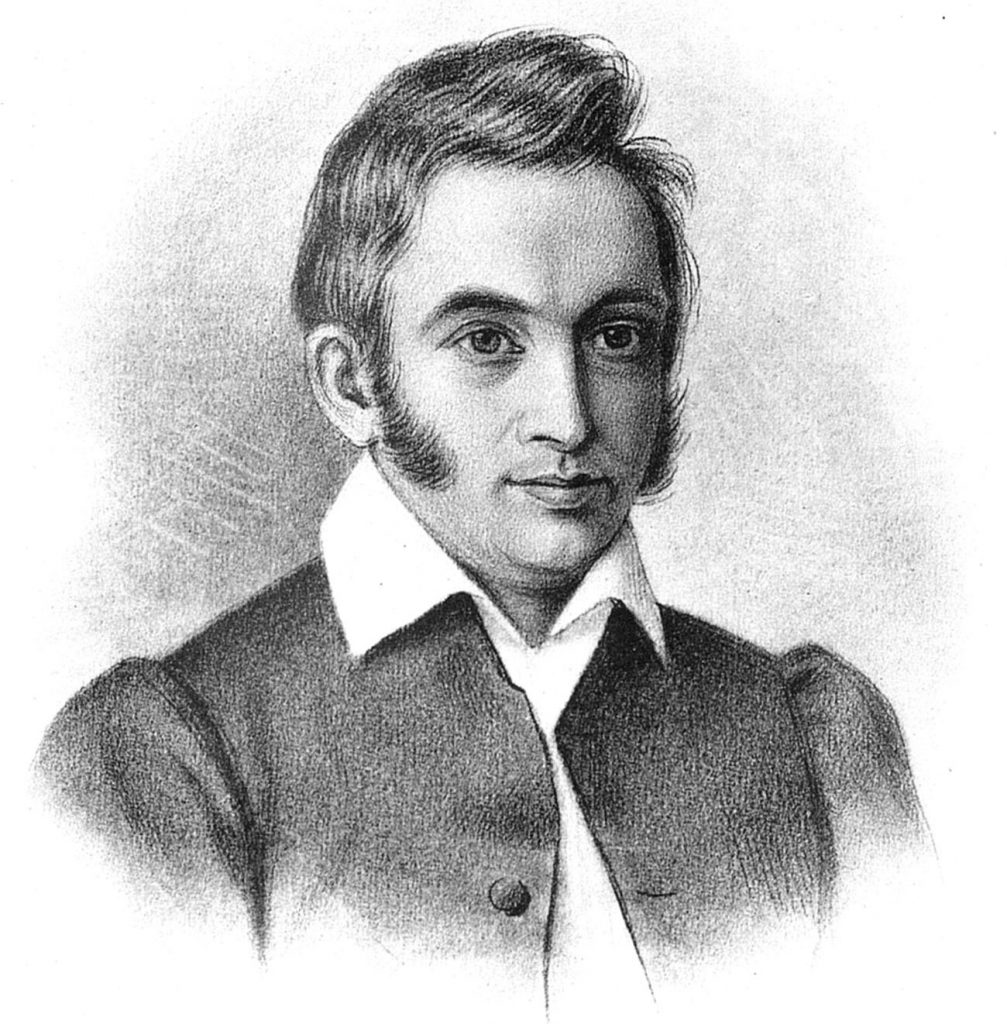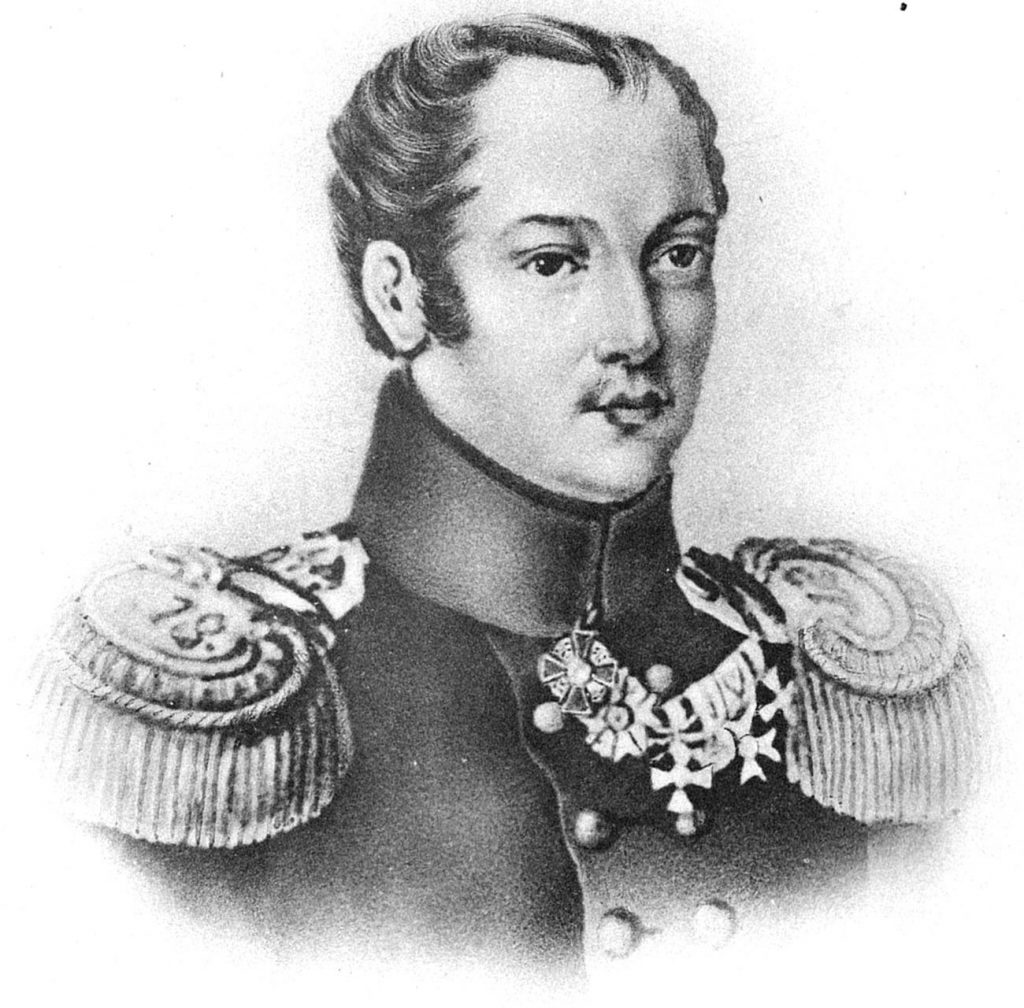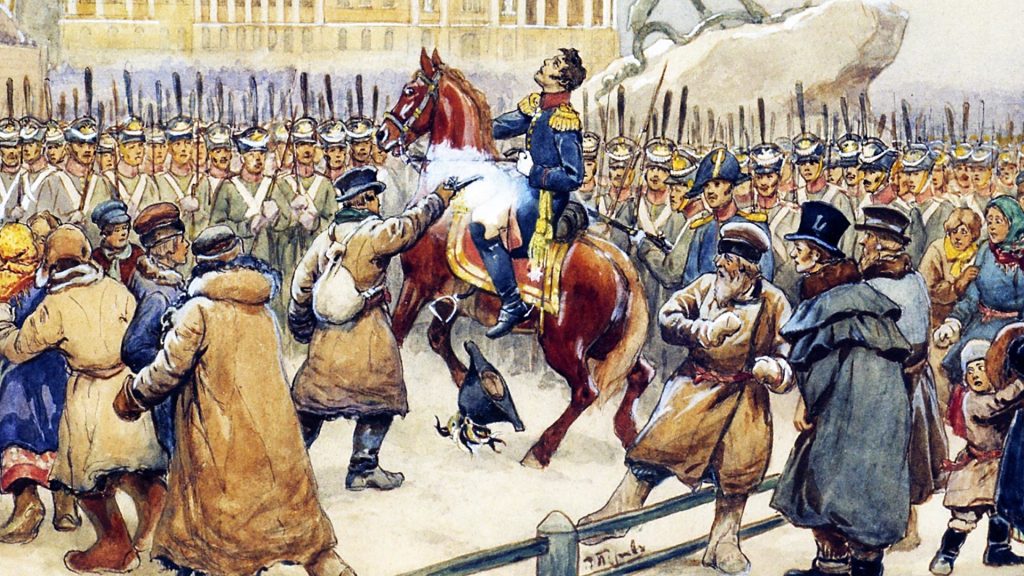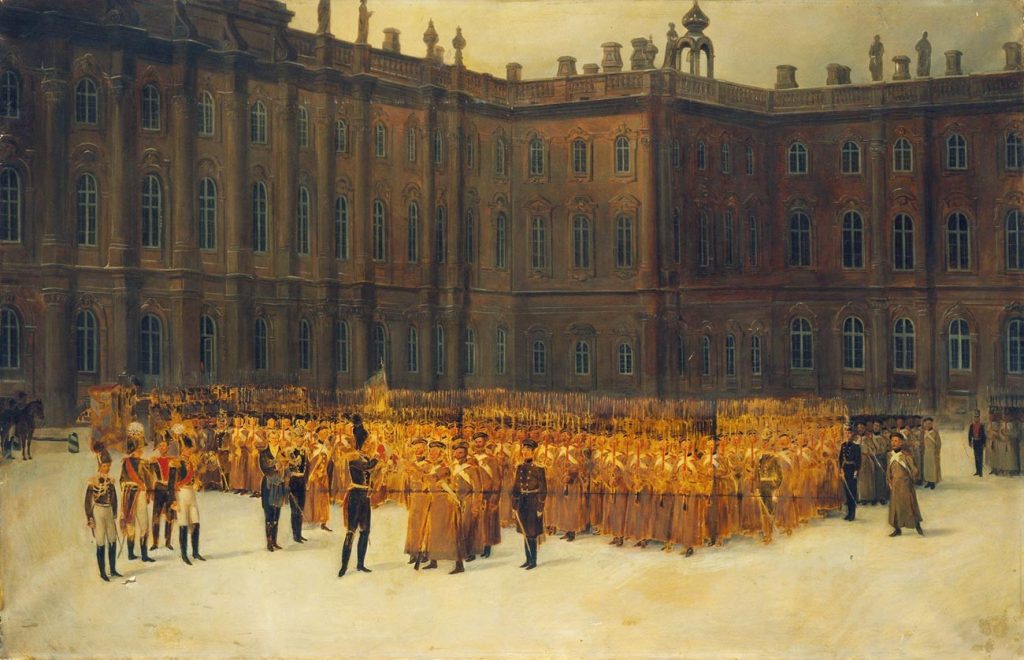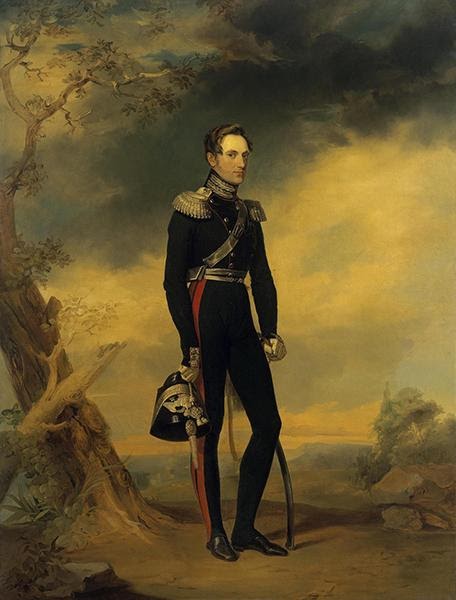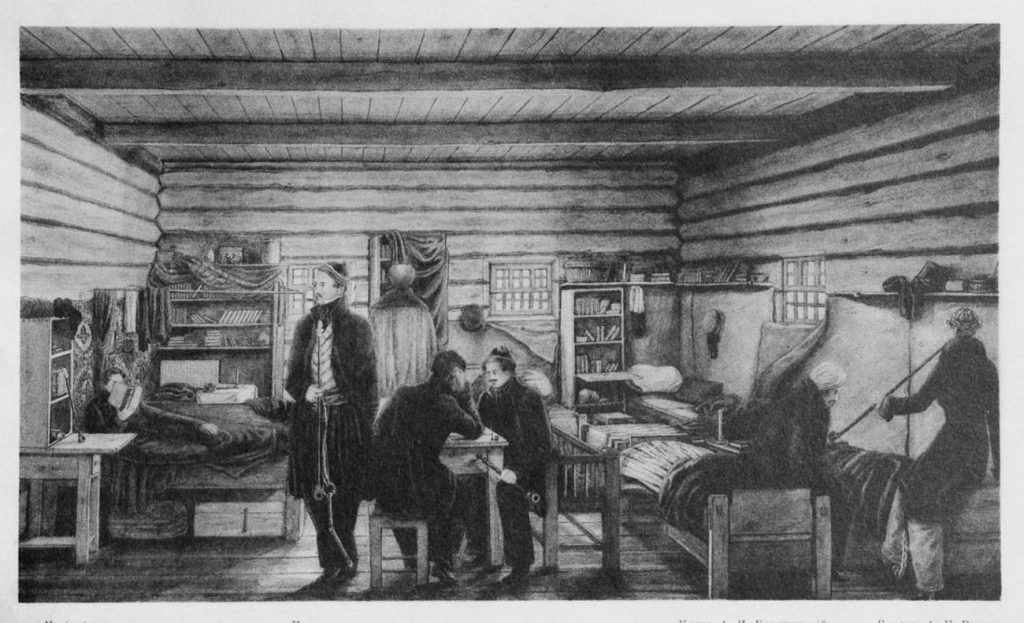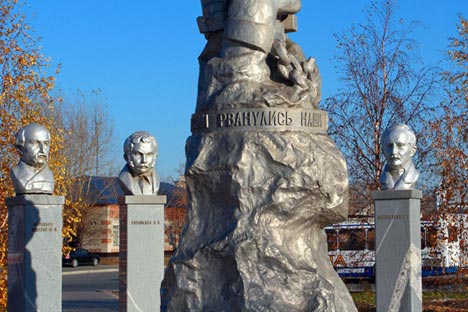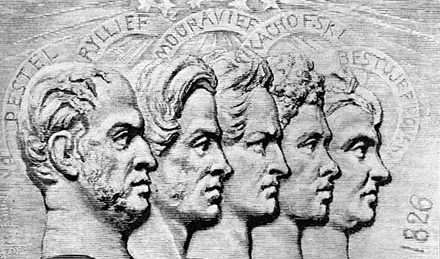Revolutionists
The uprising of the Decembrists: Восстание декабристов.
Decembrists. The Russians call it the Decembrist Revolt, in Russian it is this: Восстание декабристов. Anglicized or ‘Romanized’ it becomes: Vosstanie dekabristov. The uprising or the revolt of the Decembrists.
This miniature revolution took place in Russia on 14 December, 1825. On the Old Style calendar, it would register as December 26, Christmastime. This was the earliest attempt at a violent overthrow of power in the Russian Empire, almost 100 years before the communist Revolution of 1917.
Who were the Decembrists?
The Decemberists were Russian military officers and noblemen. Members of different anti-government secret societies. These idealists eventually organized the Decemberist revolt of 1825. In total, there were over 600 Decemberists and their sympathizers. Among them were members of the Empire’s riches and famous aristocratic families: among them were royal guards Alexander Muravyov and Nikita Muravyov, Prince Ilya Dolgorukov, Prince Sergey Trubetskoy, and a number of other young noblemen.
The Poet Alexander Pushkin, the tsar’s advisor Mikhail Speransky and General Alexey Yermolov were also close to the Decemberist circles; some of them barely evaded persecution and punishment for their involvement.
The Secret Organization
The Union of Salvation (also known as Society of True and Loyal Sons of the Fatherland) formed in 1816 with thirty some odd members. The leaders included Pavel Pestel, Nikita Muravyov, Sergey Muravyov-Apostol, Matvei Muravyov-Apostol, Sergei Trubetskoy, Ivan Yakushkin, Yevgeni Obolensky, Ivan Pushchin, Mikhail Lunin and a number of others.
The movement consisted of a sequence of secret societies, modelled on Masonic lodges, the first of which, the Union of Salvation, was headed by young army officers Sergei Trubetskoi, Nikita Muraviev and his cousin Alexander Muraviev.
Recently returned from the post-Napoleonic Wars of Liberation in Western Europe and impressed by European political and social institutions, they were typical of the patriotic and idealistic sons of the gentry anxious to initiate and implement fundamental changes in Russian politics and society.
In 1818 Trubetskoi and the Muravievs formed a new, more broadly based society, the Union of Welfare which recruited more than 200 members. In 1821 its governing directorate declared the Union defunct as a way of ridding the organization of unreliable and unwanted members. This move resulted in the division of the the Union of Welfare into two parts. These were The Northern Society, which was formed largely by junior officers of the guards regiments stationed in St Petersburg, and The Southern Society whose members were drawn from the regiments of the Second Army based in Ukraine at Tulchin. Both groups began constitutional projects for a new Russia.
What the Decembrists wanted:
The Decemberist leaders wanted to overthrow the Russian government and regime, arrest the tsar and the royal family, and create a constitutional Russia. Their two main documents, which contained the blueprints for the future political system, would serve as their foundation going forward.
According to ‘Russkaya Pravda’ (Русская правда, “Russian Justice”; a name borrowed from an ancient Russian code of laws) by Pavel Pestel, the most radical among the Decemberists, Russia was to become a republic with a provisional government made up of respected people, and the tsar’s family was to be physically removed in order to prevent any restoration of the monarchy. The second document, Nikita Muravyov’s ‘Constitution’, declared Russia a constitutional monarchy, with the tsar playing only a representative role. Any further plans were really vague, as the Decemberists were very doubtful about the fate of their revolt and had postponed it for years.
During the eventually victorious War of the Sixth Coalition (March 1813 – May 1814), the Russian army marched through Europe and back. The officers and the soldiers saw with their own eyes the lives and days of European peasants, townsfolk and the nobility. Many noble Russians returned home from the wars with a desire to change things – to liberate the serfs and to introduce a constitution in Russia.
These ideas were inspired by the French Encyclopedists, and by the American Constitution. In fact, the Constitution written by Nikita Muravyov was essentially a rough translation of the United States Constitution). Constitutional ideas loomed in the first years of Tsar Alexander I’s rule, but after the victory over Napoleon, Alexander gradually turned away from any kind of reforms in Russia. Although the Emperor knew about the secret societies and their constitutional ideas, he accentuated his disapproval of such ideas and, in 1822, banned all secret societies in Russia. The Decemberists saw the overthrow of the monarchy in Russia as the only way to execute their plans.
Planning a Coup d'Etat
Since 1814, the future Decemberists created several secret societies that had proclaimed their goals as: eradicating social vices, fighting corruption and aiding the enlightenment of the masses. The Union of Salvation (1816-1817) was transformed into The Union of Prosperity (1818-1821). It had over 200 members and about 15 regional “branches”, but only the upper 30 members knew they had a constitutional coup d’etat planned in the future. By 1821, the Union of Prosperity became so widely known among the nobility, it had to be dissolved. It split into the more radical Southern Society in Kiev, led by Pavel Pestel, and the more liberal Northern Society in St. Petersburg, under the command of Nikita Muravyov.
By autumn 1825, both societies had come to an agreement that the coup d’etat was to be executed in summer 1826 – Emperor Alexander and both his brothers, Grand Duke Konstantin and Grand Duke Nicholas were to be arrested during major military training in the southern parts of Russia, and at the same time, a military uprising was to be organized in St. Petersburg. But on November 27, 1825, news had reached St. Petersburg that Alexander had suddenly died on November, 19, while on wellness holidays in Taganrog, Russia. Because of the new circumstances, the Decemberists’ plans had to be changed. Their scheme became urgent.
Since 1814, the future Decemberists created several secret societies that had proclaimed their goals as: eradicating social vices, fighting corruption and aiding the enlightenment of the masses. The Union of Salvation (1816-1817) was transformed into The Union of Prosperity (1818-1821). It had over 200 members and about 15 regional “branches”, but only the upper 30 members knew they had a constitutional coup d’etat planned in the future. By 1821, the Union of Prosperity became so widely known among the nobility, it had to be dissolved. It split into the more radical Southern Society in Kiev, led by Pavel Pestel, and the more liberal Northern Society in St. Petersburg, under the command of Nikita Muravyov.
By autumn 1825, both societies had come to an agreement that the coup d’etat was to be executed in summer 1826 – Emperor Alexander and both his brothers, Grand Duke Konstantin and Grand Duke Nicholas were to be arrested during major military training in the southern parts of Russia, and at the same time, a military uprising was to be organized in St. Petersburg. But on November 27, 1825, news had reached St. Petersburg that Alexander had suddenly died of Typhus on November 19, while on wellness holidays in Taganrog, Russia. Because of the new circumstances, the Decemberists’ plans had to be changed. Their scheme became urgent.
The Revolt
After the death of Tsar Alexander, Russia spent two weeks in interregnum. Grand Duke Konstantin was the next in line to the throne; but in 1823, more than two years before Alexander’s death, Konstantin had signed an abdication from the throne – secretly, in order not to cause a stir in the society. The throne was to be transferred to Nicholas, but he didn’t know it – only three people in the Empire, Alexander’s trusted officials, knew about the abdication.
Immediately after the news of Alexander’s death was received, Nicholas, and all officials, the army, and people in St. Petersburg started swearing their formal allegiance to Konstantin as the new Emperor, and an official letter was sent to Warsaw where Konstantin resided. Konstantin replied to Nicholas, writing that he had abdicated, and bluntly refused to do anything. Messages travelled slowly – Nicholas didn’t receive Konstantin’s reply until December 7. For a few weeks, Russia thought Konstantin was their new Emperor. Nicholas understood then that had to assume power and on December 13, he announced his decision and planned the new oath of allegiance to be performed the next day, December 14.
The Decemberists understood that this was probably their last chance to seize power. Nicholas had a rotten reputation among the army, including some of the royal guards, for his rigor and faultfinding. The Decemberists planned to interrupt the swearing of allegiance in St. Petersburg. The officers were to incite the soldiers of the royal guards to revolt, take the Winter Palace, arrest Nicholas and his family, and declare a Provisional Government. Prince Sergey Trubetskoy was chosen as the “dictator”, the revolt’s leader.
How did the Revolt happen?
On December 14, various Decemberists had failed in their missions. After Pyotr Kakhovsky refused to sneak into the Winter Palace and kill the tsar, Alexander Yakubovich refused to lead two regiments to take the Winter Palace. Also, Yakov Rostovtsev, one of the Decemberists, had informed Nicholas about the plan of the revolt.
On the morning of December 14, the Decemberists officers raised three regiments to a revolt against Nicholas – royal guard soldiers, more than 3,000 in total, marched to the Senate square in St. Petersburg, just minutes from the Winter Palace, and simply stood there doing nothing. Prince Trubetskoy, the appointed dictator among the revolutionists somehow failed to appear on the square. The Decemberists were in a tight situation, they had to choose a new leader right on the spot.
Meanwhile, loyal army regiments twice attacked the revolting ones, but they withstood the onslaught. The square was filled with crowds of onlookers. Several people, including Grand Prince Mikhail and general Mikhail Miloradovich, the military governor of St. Petersburg, had appeared before the revolting regiments, pleading for them to surrender, but to no avail. Miloradovich was shot and killed by the Decemberists officers. Emperor Nicholas later said to his brother Mikhail: “The most surprising thing about this story was that you and I weren’t shot.”
Before dark, Nicholas finally ordered buckshot and cannons to be fired against the regiments, which then quickly dispersed. The revolting soldiers fled the square and ran to the Neva River, where they tried to organize a military formation right on the ice and attack the Petropavlovskaya fortress. Many drowned because cannonballs broke the ice. The 19th-century internal intelligence reports state that in total, 1,271 soldiers, officers, and civilians were killed that day, but the numbers were most likely higher.
Insurgency and Punishment
15 days after the Saint Petersburg events, in the Kiev Governorate another Decemberist revolt occured – organized by the Southern Society. After the news about the December 14 revolt spread across Russia, Sergey Muravyov-Apostol, one of the Decemberist leaders, was arrested in the village of Trilesy, but freed forcibly on December 29. He then led an uprising of the Chernigov Infantry Regiment. The revolt was suppressed by the loyal forces on January 3, 1826, and Muravyov-Apostol was taken into custody.
The investigations into the uprising were very thorough: all members of the Decemberist conspiracy were interrogated, some of them by the Emperor himself. Their statements, including their explanations of their goals, their critique of the government and their constitutional plans were recorded into several volumes. Nicholas later repeatedly referred to these materials during his rule. He even ironically called the Decemberists “my friends of the 14th”.
In total, one hundred twenty one noblemen were condemned to differing penalties and sentences. Five of the Decemberists’ leaders were sentenced to death by hanging (a shameful death for a nobleman). Pavel Pestel, Sergey Muravyov-Apostol, Pyotr Kakhovsky, Mikhail Bestuzhev-Ryumin, and Kondraty Ryleyev were hung in secret on July 13, 1826. Within a week, the Decemberists sentenced to various terms of Caucasus and Siberian exile started leaving St. Petersburg.
An array of sentencing was handed out. These included: being stripped of nobility, lifelong hard labor, demotion of officers into soldiers, exiles to serve in the Caucasus and exile to Siberia.
